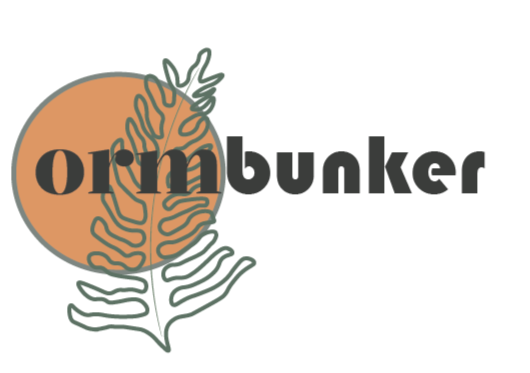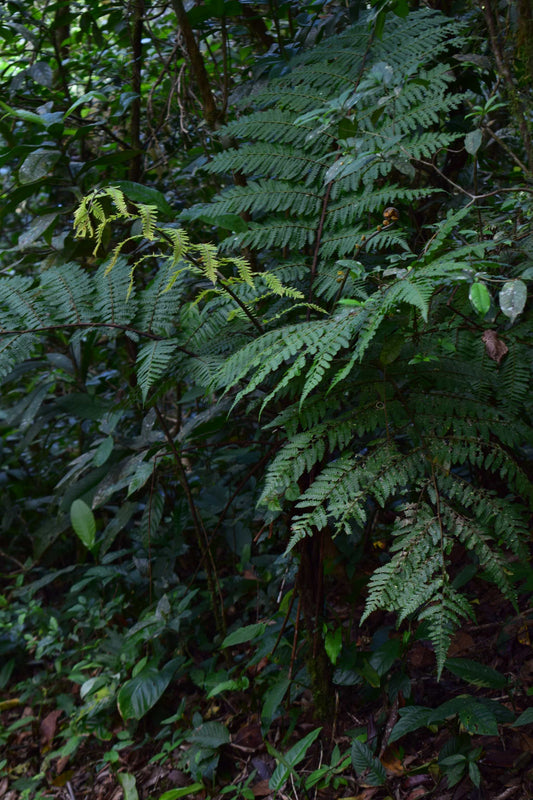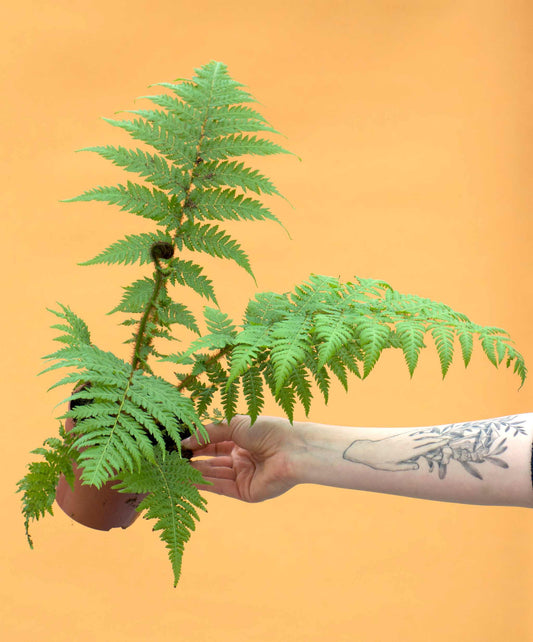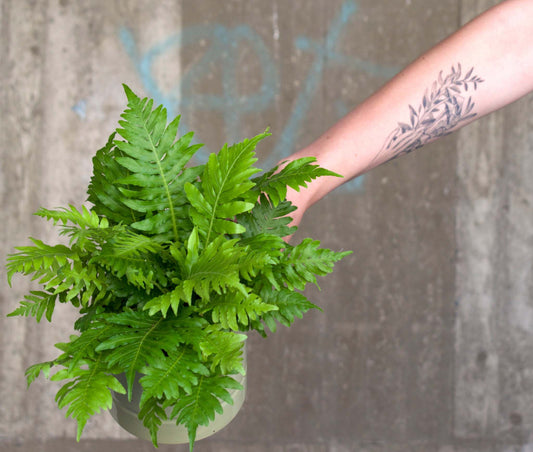Collection: Ferns
Collapsible content
Read about Ferns
Ferns, which are popular plants in homes today, are among some of the oldest plants on earth.
They dominated the Earth's flora more than three hundred million years ago, long before flowering plants emerged. Today's ferns may not reach the impressive sizes of their prehistoric relatives, which thrived in warmer and wetter climates, but they are still fascinating and long-lived plants. Among other things, it is the remains of prehistoric ferns that constitute coal deposits, a resource that plays a crucial role in today's industry and energy supply.
Origin
There are over 10,000 species of ferns, and they are found all over the world. Most of them thrive in moist and shady environments, especially in tropical rainforests where they grow on the ground or as epiphytes on tree trunks and branches. Some species can take on tree-like forms, while others can survive in very dry areas, such as mountain crevices or high places near the eternal snow line. They can also be found in wetlands and watercourses.
Although ferns reproduce through spores and neither bloom nor produce seeds, there are many legends about the mythical "fern flower". According to folklore, this flower is said to bloom only on Midsummer's Eve and to possess magical properties, especially when it comes to finding hidden treasures.
Ferns are considered to have a positive effect on the indoor climate by ionizing the air, which can contribute to increased well-being. Systematically, ferns belong to the class Filicineae, but the individual species are often placed in separate families, where the family name is often derived from the scientific name of the plant.
Although there is a great diversity of ferns, only a few are grown as houseplants or used in floristry for their decorative leaves. Their popularity in homes and public spaces is due to their dense, lush foliage and varying shades of green, which create a vibrant and natural atmosphere.
Common species and varieties
Today, there are many species of ferns to choose from, and they differ in size, leaf shape, color, and care requirements. Below are some of the most popular species that are readily available in the trade.
Nephrolepis exaltata (Sword Fern)
This species is one of the most widely cultivated ferns and originates from tropical and subtropical regions. The genus Nephrolepis includes about 30 species that can be both epiphytic and terrestrial. The sword fern has long, arched leaves with small, closely spaced leaflets along a thin and stiff stem. The young leaves are coiled in a spiral shape, just like all ferns. The plant spreads by sending out root-like shoots that can develop into new plants. There are many different varieties of Nephrolepis exaltata, which vary in leaf size, shape and structure.
Cyrtomium falcatum (Shiny Fern)
This fern belongs to the Aspidaceae family and includes about ten species that grow naturally in forests in Asia, from Japan to China, as well as in Africa and on the islands of Polynesia. The glossy fern has dark green, shiny and leathery leaves. It is hardy and easy to care for, does not require high humidity or high temperatures, and thrives equally well in cool as in warmer rooms. The plant prefers lime-poor soil and should be watered with soft water. In spring and summer, it can be fertilized once a month with a lime-free liquid nutrient. Propagation is by division or spores.
Adiantum (Venus hair)
This group of ferns is characterized by their small, light green leaves and their sensitivity to drying out. They thrive best in humid environments and are found naturally in tropical areas, mainly in South America, where they often grow in crevices and moist forest environments. There are about 200 species within the genus Adiantum, and the best-known species are Adiantum raddianum and Adiantum macrophyllum. These ferns require a lot of water and high humidity to thrive.
Platycerium (Elk Horn Fern)
This genus includes 18 species that grow epiphytically in tropical forests throughout the world, mainly in Asia, Australia, and parts of South and Central America. Platycerium has two types of leaves: broad, flat leaves that attach to tree trunks and act as nutrient-collecting organs, and elongated, horn-like leaves that produce spores. The most widely cultivated species is Platycerium bifurcatum, also called elkhorn fern, which is originally from Australia.
Asplenium nidus (Bird's Nest Fern)
This tropical fern grows epiphytically in treetops and forms large, rosette-shaped leaves. The leaves are light green, shiny and can grow up to one meter long. The bird fern is sensitive to drying out and thrives best in high humidity and partial shade. Due to its aesthetic shape and lush foliage, it is a popular ornamental plant.
Pteris cretica (Cretan fern)
This species is one of the most widely cultivated ferns and comes from tropical and subtropical regions. The leaves can have varying colors and patterns depending on the variety, and they grow in dense clumps from a common rootstock. Cretan fern thrives in shady environments and needs consistent moisture.
Care and maintenance
Ferns require high humidity and can easily dry out, leading to leaf drop and increased susceptibility to pests such as spider mites. To ensure optimal growth, it is a good idea to plant them in a larger pot after purchase and use Leca balls and water-retaining materials such as hydrogel to prevent drying out. There are also irrigation systems, such as hydroboxes, that help keep the soil evenly moist.
With proper care, ferns can become long-lasting and decorative features in the home, and their lush foliage creates a sense of natural greenery and harmony.
-
Platycerium bifurcatum | Elk horn bracken
Regular price From 59 SEKRegular priceUnit price / per -
Dicksonia antarctica 'frost-resistant tree fern'
5.0 / 5.0
(1) 1 total reviews
Regular price 199 SEKRegular priceUnit price / per -
Asplenium nidus | Bird's-foot trefoil
Regular price 259 SEKRegular priceUnit price / per -
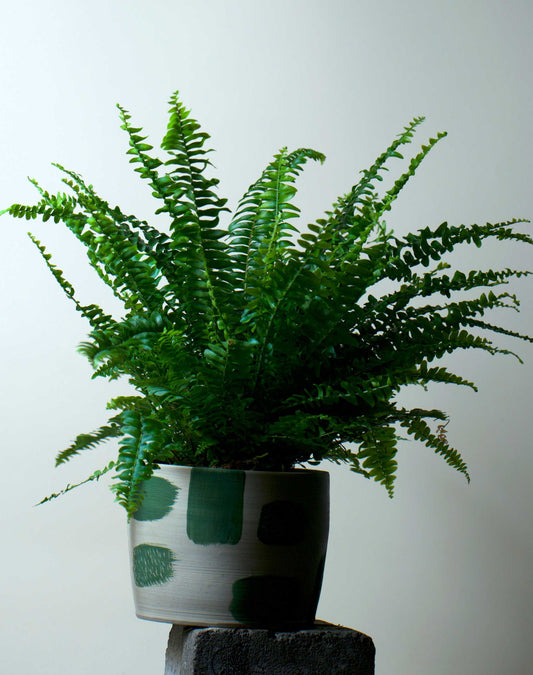
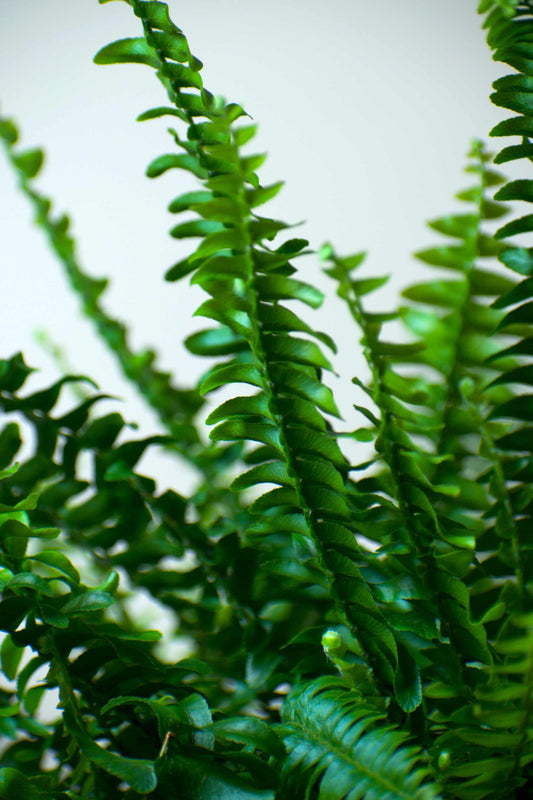 Sold out
Sold outNephrolepis exaltata 'spear vetch'
Regular price 99 SEKRegular priceUnit price / per -
Humata tyermannii 'Spider Fern'
Regular price 129 SEKRegular priceUnit price / per -
Hemionitis arifolia (Willow Fern)
Regular price 49 SEKRegular priceUnit price / per -
Cyathea cooperi | Tree fern
5.0 / 5.0
(1) 1 total reviews
Regular price 199 SEKRegular priceUnit price / per -
Blechnum Gibbum 'Silver Lady' treefern
5.0 / 5.0
(1) 1 total reviews
Regular price From 35 SEKRegular priceUnit price / per55 SEKSale price From 35 SEKSold out -
Microsorum musifolium 'crocodile fern'
5.0 / 5.0
(1) 1 total reviews
Regular price 129 SEKRegular priceUnit price / per
